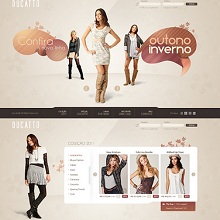You’ve heard that less is more, right? Well, that philosophy also applies to web design. Why do so many companies become obsessed with complex web design schemes? Because they believe that they need to show everything to everyone. They believe their complicated designs will offer “a little bit of something for everyone.” The reality is that it offers nothing for everyone. Here’s why less really is more.
Simple Is Easier To Process, Cognitively
Cognitively speaking, simple is easier to understand. It’s easier to process, scientifically. As visual information enters your eye, your brain converts the light into information that it can understand. The more colour variations there are, the more your brain has to work to understand what it is you’re looking at.
Think about how road signs are designed. They’re always simple. Why? Because it’s easier for your brain to understand them, especially when you’re moving at speed.
Just keep in mind that the more electrical impulses that must be transmitted, the harder you’re making the end-user work to understand your message. Why make it harder? Make it easier and you’ll improve sales. Not convinced?
Use The Way Back Machine to look at skinnyties.com. This website used to be very complex. The color scheme was a little convoluted and navigation was not at all intuitive. Now, look at the more modern design. See the difference?
It’s much easier to understand the layout. Instantly, you know where to go, how to find what you’re looking for – the layout looks cleaner, fresher. It looks simpler. It also resulted in some impressive improvements. This small family-owned tie company saw a 4 percent increase in revenue, a 2 percent decrease in their bounce rate, a 6 percent increase in visit time (duration), and a 6 percent increase in their conversion rate.
For iPhone users, the revenue growth improved by 377.6 percent. The conversion rate rocketed up by 71.9 percent. The numbers speak for themselves. Simpler is better.
Another example of this philosophy includes Vancouver personal injury lawyers, Watson Goepel. They are used to dealing with personal injury clients, and these people are “regular folks.” One of the things they learned was that a simpler web design helped users better navigate the site, improved usability, and made it less confusing for people to understand what it is they do.
Deviation Creates Negative Impressions
When you deviate from a simple web design, the innocuous or “cool” features become the thing that people start to focus on instead of what you intended for them to focus on. For example, if your page takes more than 3 seconds to load, and all people can see is your complicated navigation menu, people start to focus on that, wondering why it is that you have this complex navigation scheme.
They start wondering why the site isn’t actually working like it should. You don’t want this.
Simple Is Intuitive
Think about companies that are steeped in design, like Apple. This is a company that bases most of its decisions on its design. One thing they’ve learned is that simple is intuitive. If users can’t figure out how to use a site when they land on it, they’re going to bounce pretty quickly.
In fact, independent usability studies always confirm this. Norman Nielsen Group, a usability company based in Fremont California, consistently finds that non-intuitive user interfaces and web designs drive users away. So, take a tip from them. Fix your homepage, and your website, and be rewarded with happy users.
Robert Johnson likes to keep one finger on the pulse of web design and marketing. When he finds something interesting and helpful he likes to share it by posting on the web. You can read his helpful articles on a number of websites and blogs today.







